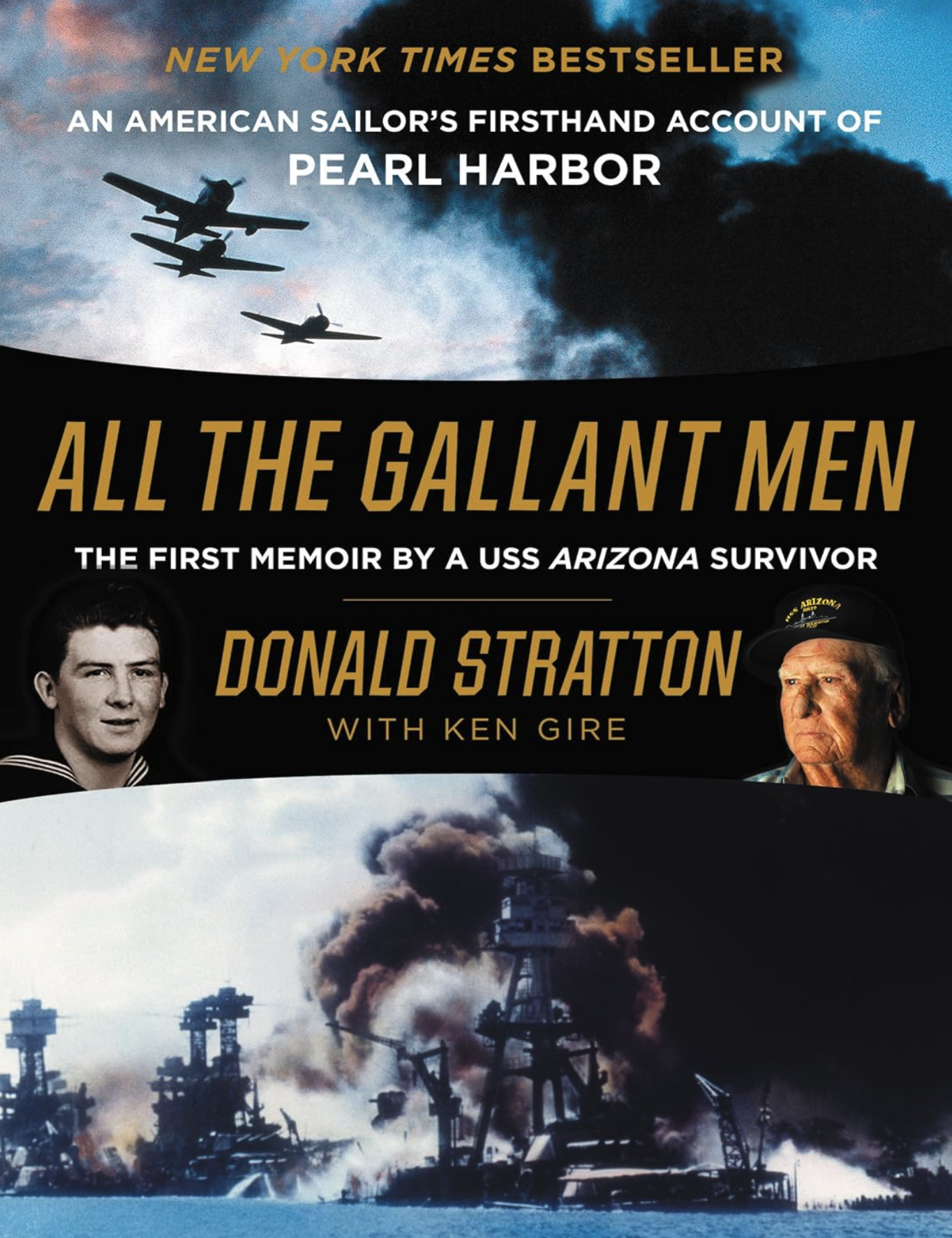I grew up in what used to be a very small Hawaii town on the Ko’olau Mountain Range. Back then, the town of Aiea was known best for its sugar mill but is these days known only as a suburb of Honolulu. We had a full view of Pearl Harbor from our house. I took the only photo I have of that view when I visited my parents in 2001 because I noticed the state had finally built a bridge to Ford Island. If you look just beyond that bridge, you will see the Arizona Memorial, built over the sunken remains of the USS Arizona battleship.
— James Albright

Updated:
2025-02-10
I’ve read a lot about the leadup to December 7, 1941, the Japanese attack on Pearl Harbor, and the war that followed. But other than the cold statistics, I never heard a first-hand account from a member of the USS Arizona. Until now. A few years ago, seventy-six years after the “date which will live in infamy,” a crewmember of the ship wrote a memoir, “All the Gallant Men.”
Donald Stratton joined the Navy in 1940 and was assigned to the USS Arizona. On the night of December 6th, he slept on the deck to escape the heat of his quarters and the snoring of his shipmates. As he writes, “I felt like the luckiest boy from Red Cloud, Nebraska. I was in the Navy, seeing the world, stationed in the most beautiful parts of that world. I was nineteen. My entire life stretched before me. The whole shimmering Milky Way of it.”
The next morning, after breakfast, Stratton came up to the deck in time to see the first bombs explode on Ford Island. He ran to his battle station, a starboard gun sight-setter in the port antiaircraft director, where he had a ringside seat to the upcoming demolition of his ship and the rest of the fleet. He tells the story of the attack viscerally, the deafening noise, the smell of the acrid smoke, the heat of the fires.
“A great sucking sound, like a whoosh, rocked the ship and everyone in it with concussive force. A 1,760 pound, armor-piercing bomb, dropped from ten thousand feet above, had penetrated four steel decks to the ammunition magazine. The blast blew the No. 1 turret into the air, where it came crashing back onto the deck. A plume of black smoke spewed out of the forward smokestack, and an expanding fireball shot five to six hundred feet into the air, engulfing those of us in the director.”
Stratton was burned over 65% of his body, and with his 5 crewmates in the director, there was no hope for rescue.
The Tradewinds began to blow some of the smoke away, and the sailors got the attention of someone on the USS Vestal, a sailor named Joe George. Joe was on deck fighting fires spread from the Arizona. He managed to throw a heaving line over to the men. They pulled a heavier line over and one by one began to climb across the gap separating the two ships.
Donald and 5 others climbed hand over hand across the burning oil-slicked water, 70 feet to safety, and all this while being strafed by Japanese fighters. Joe George saved 6 lives that day and was never awarded for his heroism until 76 years later.
“All the Gallant Men” traces Stratton’s early life leading to the Navy and follows with his recovery from the burns and his return to the Navy to get back into the fight. Stratton’s story isn’t extraordinary for the time, and that fact in itself is extraordinary. You have to wonder, however, why we haven’t heard such a first-hand account before. The answer is that so few survived.
1,177 sailors died on the USS Arizona, that day. The ship had a crew of 1,512 at the time. Many of the bodies were burned beyond recognition and buried as unknown servicemen in nearby cemeteries. Over 900 of the remaining crew were declared, “buried at sea.” The ship remains at the bottom of the harbor, now a memorial. The name, USS Arizona, will soon be borne by SSN-803, a Virginia-class submarine. Stratton passed away in 2020, at 97 years old. If you want to understand how the United States managed to recover from the devastating attack at Pearl Harbor and went on to win the War in the Pacific, you need to understand what drove the men of the time. You need to read Donald Stratton’s story.


